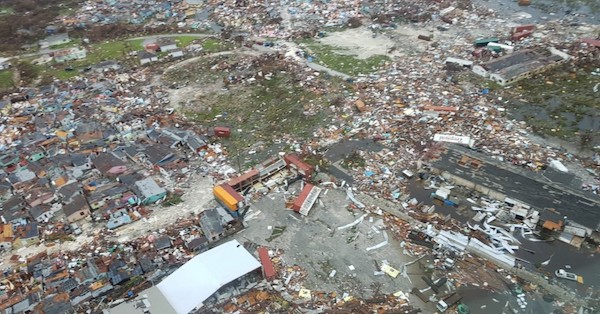Confronting Catastrophic Disasters With 21St Century Technologies
 Aerial images of Hurricane Dorian's devastation of the Bahamas began circulating Tuesday. (Photo-Our News via Travis C-Carroll/Twitter)Under the current conditions in the Bahamas, a top priority should be the real-time deployment of a robust information management and communications platform to support vital health security efforts. Technologies that permit the self-sorting of potentially ill, injured or infected populations via the use of wearables, sensors and other biometric devices would be critical to direct the right resources to the disaster victims who need them most.
Aerial images of Hurricane Dorian's devastation of the Bahamas began circulating Tuesday. (Photo-Our News via Travis C-Carroll/Twitter)Under the current conditions in the Bahamas, a top priority should be the real-time deployment of a robust information management and communications platform to support vital health security efforts. Technologies that permit the self-sorting of potentially ill, injured or infected populations via the use of wearables, sensors and other biometric devices would be critical to direct the right resources to the disaster victims who need them most.
Applications of artificial intelligence and computer vision technologies to aid clinical triage and diagnostics could help ensure that scarce resources are preserved and given to those most in need. Robust telehealth and telemedicine connectivity could be used to provide healthcare consultations to an isolated or mobile population needing urgent assistance. Technologies that support efficiencies in vital supply chains, and the potential to synthetically create alternatives to scarce resources, also would be critical and valuable...
- Tags:
- artificial intelligence
- Bahamas
- biotechnology
- catastrophic disasters
- computer vision technologies
- crowdsourced information
- Dan Hanfling
- digital health solutions
- disaster management
- disaster relief efforts
- emergency preparedness
- Emergency Preparedness and Response (EPR)
- emergency response
- government agencies
- Hurricane Dorian
- In-Q-Tel
- large-scale catastrophes
- life sciences
- outbreak epidemics
- public health database
- remote based medical care
- scientific research and development (R&D)
- startup companies
- Tara O’Toole
- telehealth platforms
- telemedicine connectivity
- The Hill
- U.S. national security
- venture capital investors
- Login to post comments